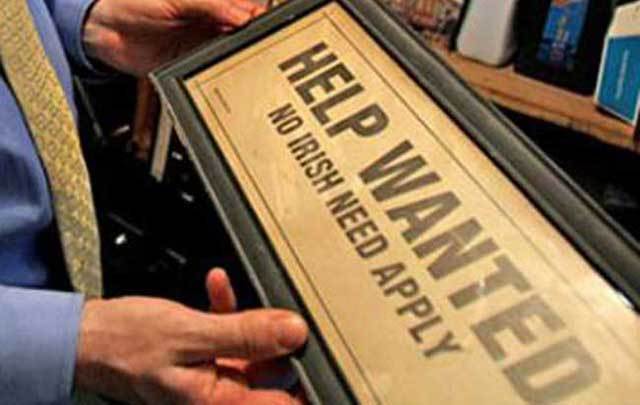The Clancy Brothers and Tommy Makem are widely regarded as one of Ireland's greatest-ever ballad groups and their cover of the 19th-century ballad "No Irish Need Apply" tells the story of anti-Irish discrimination in the United States.
Written in 1862, the song tells the story of an Irish immigrant who faces outward discrimination in his search for a job on the grounds that he is Irish.
The immigrant is faced with a sign bearing the slogan "No Irish Need Apply" (NINA), causing his temper and sense of injustice to rise. He argues with the business owner responsible for the slogan, reasoning that their ancestors also emigrated to America and were welcomed with open arms but is unsuccessful in his attempts to gain employment.
Unperturbed, the Irish immigrant notes that the business owner is one of a few "bad apples" that persevere with anti-Irish prejudices and that most employers would be happy to hire an Irishman.
The song is rooted in anti-Irish sentiment in America and Britain throughout the 19th century.
In America, Catholic Irish immigrants faced discrimination from nativists, often facing NINA signs when looking for work, with a significant amount of discrimination coming from Irish and English Protestants living in the United States.
Irish Catholics were largely marginalized in mid-19th century American society, with future President Theodore Roosevelt describing them as a "stupid, sodden and vicious lot, most of them being equally deficient in brains and virtue".
In Britain, Irish immigrants faced similar discrimination and prejudice and were regularly faced with NINA signs. The rampant anti-Irish discrimination in Britain gave rise to the first known versions of the famous song, with two editions making their way across the Atlantic Ocean to the United States.
In one version of the song, the immigrant faces discrimination in London and emigrates to America to escape the anti-Irish prejudice in the Land of the Free.
In another, the immigrant still faces discrimination in America despite fleeing London.
It was the latter version of the song that became popular among Irish immigrants in the United States, popularizing the idea that the Irish community faced NINA signs no matter where they turned in search of employment.
That theory has been questioned by some scholars, like American historian Dr. Richard Jensen of the University of Illinois, who claimed that No Irish Need Apply was nothing more than a "myth of victimization".
Jensen claimed that there was no significant discrimination against the Irish in the job market in America, but his argument was rebutted by Rebecca Fried, an eighth-grader from Washington DC.
Fried found that there was plenty of evidence that disproved Jensen's argument and proved that there was a significant amount of discrimination against Irish immigrants looking for work in 19th-century America.
Despite Jensen's protestations, it seems as though NINA signs really did exist on a tangible level in America as they did in Britain, giving rise to the famous song.
* Originally published in 2020, updated in April 2024.




Comments